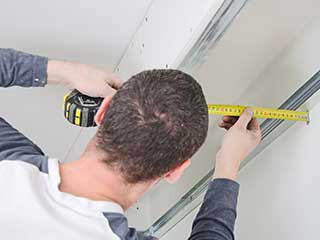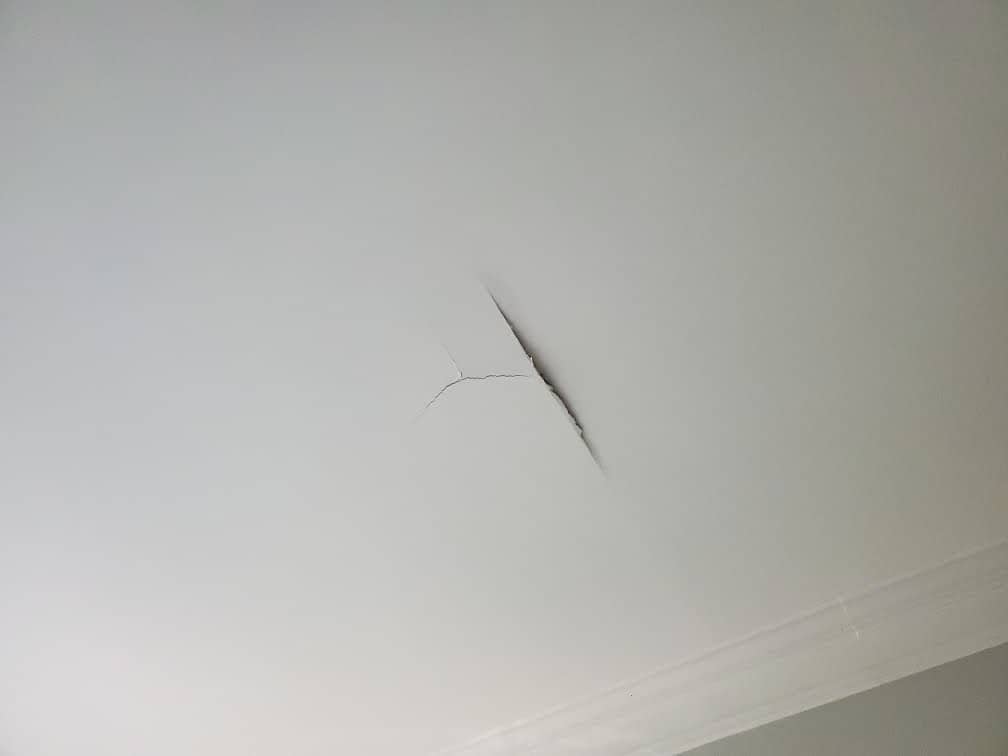A Comprehensive Overview to Mastering Drywall Repair Work and Installation
This overview uses a comprehensive exploration of drywall fixing and installation, accommodating both amateurs and seasoned experts. It describes important devices, techniques for patching and hanging sheets, and the crucial finishing processes. Drywall Installation Ogden Utah. By understanding typical risks, individuals can achieve polished outcomes. Understanding these abilities not just improves one's home yet likewise builds self-confidence in DIY endeavors. What foundational suggestions will ensure a successful task throughout?
Necessary Tools for Drywall Repair Service and Setup
When starting on drywall repair and setup, a few vital tools can significantly boost the efficiency and quality of the job. A drywall knife, commonly offered in numerous dimensions, is vital for applying joint compound and smoothing seams. A taping blade is likewise necessary for feathering sides and making sure a smooth surface. In addition, a drywall saw or energy blade permits accurate cutting of drywall sheets to fit any type of area.

Step-by-Step Guide to Patching Holes
Covering openings in drywall is an uncomplicated procedure that can restore the wall surface's look and honesty. To start, the area around the hole must be cleansed and any kind of loosened debris eliminated. For little holes, a simple spackle or joint compound can be used with a putty knife. Larger holes might call for a patch; a piece of drywall can be cut to fit the opening, secured with adhesive or screws, and then taped around the sides. As soon as the patch remains in place, joint compound is used over the spot and feathered out to blend with the bordering wall. After the substance dries, sanding is essential to achieve a smooth finish. The fixed location can be topped and repainted to match the remainder of the wall surface. This technique assures a smooth fixing, enhancing the overall appearance of the drywall and maintaining its architectural integrity.
Techniques for Hanging Drywall Sheets
After effectively repairing openings in drywall, the following action involves hanging new drywall sheets to create a seamless surface area. To accomplish this, one must begin by measuring the wall area precisely and cutting the drywall sheets to fit. It is important to hang the sheets flat for much better structural integrity, beginning from the top and functioning downwards.
Using a drywall lift can streamline the procedure, particularly for ceiling setups. Once positioned, safeguarding the sheets with drywall screws at intervals of about 12 inches along the edges and 16 inches in the field is necessary. This assures a solid hold and decreases the threat of sagging. For corners, the sheets must be cut to fit comfortably, allowing for cleaner seams. It is recommended to surprise the joints in between sheets to strengthen the total structure, developing a much more sturdy finish prepared for the following phase in the drywall installation process.
Finishing Touches: Insulation and Mudding
Finishing the drywall installment involves the crucial actions of taping and mudding, which assure a smooth and polished surface. Taping needs the application of joint tape over the joints between drywall sheets. drywall contractors. This tape can be either paper or fiberglass harmonize, with each kind offering special benefits. After taping, the next step is mudding, where joint substance, or "mud," is applied to cover the tape and fill up any kind of flaws
Utilizing a drywall blade, the substance should be spread equally, making certain a feathered side to minimize noticeable adjustments. Multiple layers are typically needed, with fining sand in between each layer to accomplish a seamless surface. Careful focus during this process is crucial, as it significantly influences the last look of the wall. With the right strategy and persistence, the end outcome will be a flawless structure all set for paint or completing touches.
Common Blunders to Avoid in Drywall Projects

Another typical blunder is not permitting enough drying time in between layers, which can trap moisture and jeopardize the finish. Ignoring to feather the sides effectively can create visible lines and imperfections. Skipping sanding or using incorrect techniques might leave harsh areas. By recognizing these risks, people can substantially enhance the quality of their drywall jobs and achieve a professional-looking finish.
Frequently Asked Inquiries
Can I Repair Drywall Without Expert Help?
Yes, one can fix drywall without professional assistance. With the right devices, products, and guidance, individuals can efficiently take care of minor repairs. Nevertheless, considerable damage may require specialist knowledge for optimal results and durability.
How Much Time Does Drywall Compound Require To Dry?
Drywall substance usually takes in between 24 to 2 days to completely dry completely, depending on factors such as moisture and temperature. Thinner layers might dry out much faster, while thicker applications require even more time for ideal results.
What's the most effective Kind of Paint for Drywall?
The best kind of paint for drywall is typically a water-based latex paint. It supplies excellent coverage, sturdiness, and ease of application, making it ideal for indoor wall surfaces while allowing for easy cleanup with soap and water.

Just how Do I Protect Against Mold And Mildew on Drywall?
To avoid mold on drywall, warranty proper ventilation, control humidity degrees, utilize mold-resistant products, and promptly attend to any leakages. Regular examinations and instant removal of water damages are additionally vital for long-term avoidance.
Is Drywall Recyclable After Elimination?
Drywall is recyclable after elimination, gave it is devoid of impurities like mold, paint, or various other dangerous products. Reusing facilities can refine it website right into brand-new products, advertising sustainability and decreasing landfill waste in building and construction.
When starting on drywall repair work and setup, a few essential devices can greatly boost the performance and top quality of the job. After successfully repairing openings in drywall, the following action entails hanging brand-new drywall sheets to produce a smooth surface area. Completing the drywall installment involves the important actions of taping and mudding, which assure a smooth and sleek surface. Attaining a polished finish in drywall jobs can be tough, and a number of usual blunders can weaken the quality of the job. Yes, one can fix drywall without expert help.